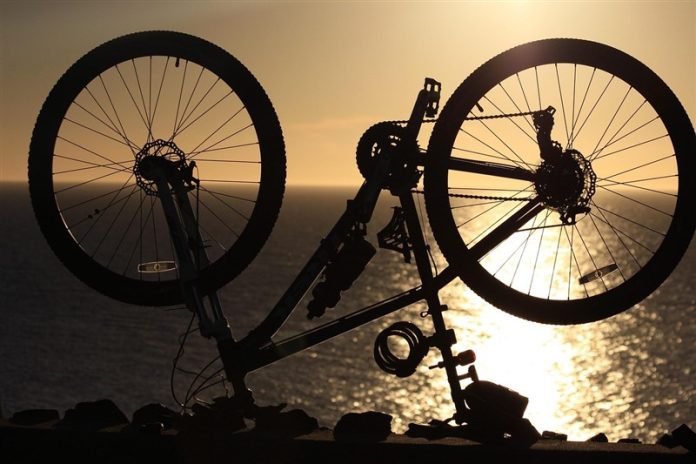Choosing between tubeless and traditional tubed tires is one of the most important decisions a cyclist can make, especially for riders tackling long distances, mixed terrains, and multi-day adventures. Both systems have their strengths and limitations, and the best choice often depends on your riding style, terrain, and priorities such as comfort, durability, and ease of repair.
In this article, we will explore the pros and cons of each system, assess their performance across different cycling disciplines such as bikepacking, gravel riding, and cycle touring, and provide practical insights into which option may be right for you.
Understanding the Basics
What Are Tubed Tires?
Tubed tires are the traditional system most cyclists are familiar with. They use an inner tube that holds air inside the tire casing. When punctured, the tube can be patched or replaced. This setup is simple, widely available, and easy to maintain, even for riders with limited mechanical experience.
What Are Tubeless Tires?
Tubeless tires eliminate the inner tube and rely on an airtight seal between the tyre and rim. A liquid sealant is added inside the tire, which automatically fills small punctures and prevents air loss. Tubeless systems often run at lower pressures without the risk of pinch flats, offering more comfort and grip on rough terrain.
Pros and Cons of Each System
Advantages of Tubeless Tires
- Puncture resistance: Sealant can fix small holes without stopping.
- Lower pressures: Allows more grip and comfort, especially on gravel and trails.
- No pinch flats: Without tubes, sharp impacts on rocks or roots are less problematic.
- Improved rolling efficiency: Some riders report smoother rolling at lower pressures.
Disadvantages of Tubeless Tires
- Setup complexity: Requires specific rims, sealant, and sometimes a high-pressure pump or compressor.
- Maintenance: Sealant must be refreshed every few months.
- Mess factor: Sealant can be messy when changing tires.
- Not immune to major cuts: Large punctures may still require a tube insert to get home.
Advantages of Tubed Tires
- Simplicity: Easy to set up, repair, or replace anywhere in the world.
- Lower cost: Tubes and non-tubeless tires are often cheaper.
- Universal availability: Spare tubes can be purchased in almost any bike shop globally.
- Low maintenance: No need to check or top up liquid sealant.
Disadvantages of Tubed Tires
- Prone to pinch flats: Hitting an obstacle at low pressures can pinch the tube.
- Less comfortable off-road: Higher pressures are often needed to avoid flats.
- Less self-sealing: Any puncture usually requires stopping to fix.
Application by Cycling Discipline
Bikepacking and Adventure Riding
Bikepacking often involves remote areas, rugged trails, and long days on the saddle. Tubeless tires shine here because their puncture resistance reduces downtime and their ability to run lower pressures enhances comfort on uneven terrain. However, tubed tires may still appeal to riders traveling through regions with limited access to bike shops, where carrying spare tubes ensures reliability without the need for specialized sealant.
Gravel Riding
Gravel cycling is where tubeless systems have become the gold standard. Lower pressures offer extra grip on loose surfaces while sealant handles sharp flints and thorns common on unpaved tracks. For competitive gravel riders, tubeless is almost always the preferred choice, while casual riders who stay close to civilization might be content with tubes.
Cycle Touring on Mixed Surfaces
For long tours on varied roads, the choice depends on your risk tolerance and logistical planning. Tubeless provides comfort on rough surfaces and reduces small punctures, but carrying tubes as a backup is still essential in case of major damage. For international tours, tubed tires offer peace of mind because spare tubes can be bought nearly anywhere, while tubeless supplies may not be easy to source.
Road Cycling
On smooth roads, tubeless tires can roll faster at lower pressures, and many road cyclists have adopted them for performance gains. However, for recreational riders who value simplicity, tubed tires remain a reliable and cost-effective option.
Tubeless vs Tubed: Key Considerations
| Feature | Tubeless Tires | Tubed Tires |
|---|---|---|
| Puncture Resistance | Sealant auto-seals small holes, fewer flats | Requires stopping and fixing punctures |
| Comfort | Lower pressures for better shock absorption | Higher pressures needed, less comfort |
| Setup | More complex, requires compatible rims & sealant | Very simple, just tube + tire |
| Maintenance | Sealant must be refreshed regularly | Minimal, replace tube when needed |
| Availability | Limited in remote areas | Easy to source worldwide |
| Cost | Higher initial setup cost | Generally cheaper and more accessible |
Common Myths About Tubeless vs Tubed
Myth 1: Tubeless Is Always Faster
Tubeless tires can reduce rolling resistance at lower pressures, but the difference is marginal on smooth tarmac. Speed gains are most noticeable on rough or loose terrain.
Myth 2: Tubed Tires Are Outdated
While tubeless systems are growing in popularity, tubes remain practical and widely used, especially for touring cyclists who prioritize simplicity.
Myth 3: Tubeless Eliminates All Flats
Large cuts, sidewall damage, or worn-out tires can still leave a tubeless rider stranded. A spare tube is always worth carrying.
Practical Recommendations
- For bikepacking: Go tubeless for comfort and reliability, but pack at least one spare tube.
- For gravel racing: Tubeless is strongly recommended for performance and puncture resistance.
- For global touring: Stick with tubes for availability and ease of repair, unless you are confident in maintaining tubeless on the road.
- For everyday road use: Either system works; choose based on whether you value simplicity or marginal gains in performance.
Final Thoughts
The debate between tubeless and tubed tires doesn’t have a universal answer. Instead, the right choice depends on your riding goals, environment, and willingness to manage maintenance. For riders tackling long-distance endurance events, gravel challenges, or rugged bikepacking routes, tubeless systems offer clear benefits in comfort and puncture protection. For those prioritizing simplicity, low cost, and global availability, tubed tires remain the dependable choice.
Ultimately, many experienced cyclists carry knowledge of both systems and choose accordingly. Whichever option you select, investing in high-quality tires suited to your terrain will deliver the greatest gains in performance and reliability.
















